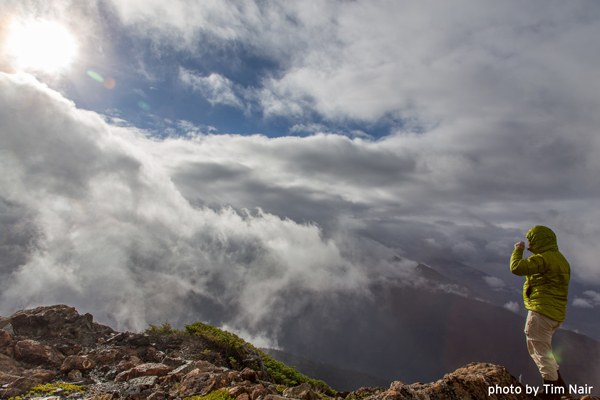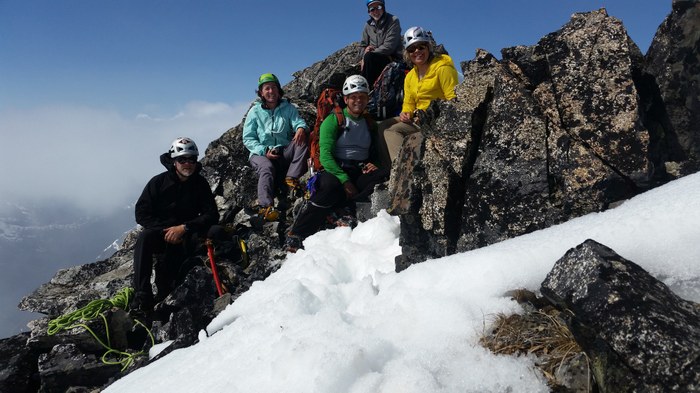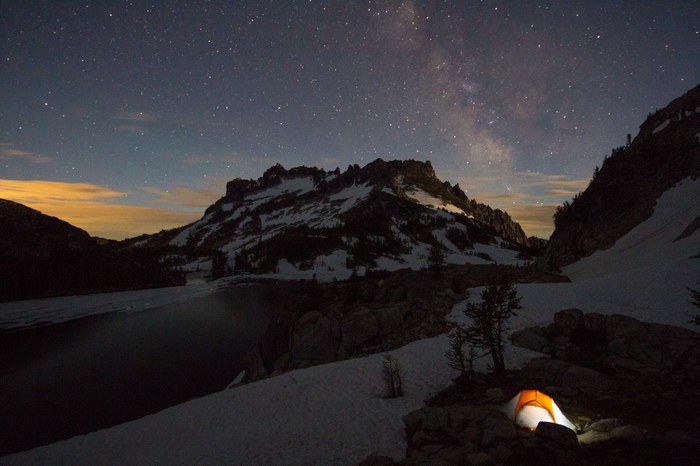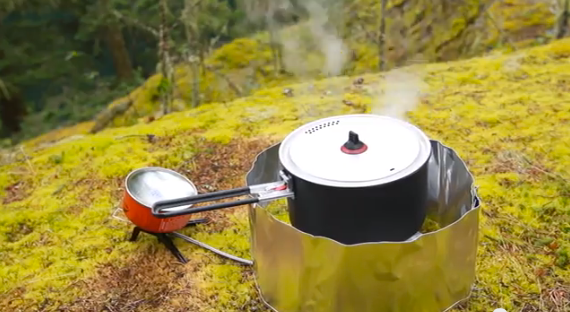Climbing
All posts
The Basic Climbing Experience

The Mountaineers offers the Basic Alpine Climbing Course in five of our seven branches. In this course, students learn the basic skills needed to climb peaks in the Cascade and Olympic ranges. In addition to learning skills, students become part of a climbing community and often connect with lifelong climbing partners. As we near the end of May, our courses are wrapping up their skills sessions, and the climbing season is beginning! Check out the experience that Seattle student, Cody Golden, wanted to share: Read more…
How should we teach climbing? Tell us!

We’ve been teaching people how to climb outside for 110 years, but that doesn’t mean we have all the answers. As we look back on the challenges we’ve faced and look forward to the opportunities to teach skills in new and different ways, we’re excited about the potential to take some of our outdoor education programs in a new direction. Read more…
Sunglasses: An Easily Overlooked Essential

With the awesome weather and sunny days we've had lately, it’s hard to think anyone would go outside without a pair of sunglasses handy. But on cloudier days or early morning alpine-starts, it's easy to forget shades in your car or tent. Sunglasses aren’t usually at the forefront of your mind at 2am when the wind's howling and you're trying to buckle your crampons. However, forgetting this vital bit of gear can be as bad as forgetting your ice axe on a glacier or your cams on a rock wall. Read more…
GiveBig: Maiza's Story

After going through a difficult time in my life, I knew I wanted to challenge myself by trying something I've always wanted to do — climbing! In 2013, I signed up for my first climbing course with The Mountaineers. Read more…
How To: Prepare for an Overnight Trip

In my last post, I discussed how to take care of your sleeping bag. I received many good questions. Thanks for taking the time to write me! One reoccurring question was about my method for storing a sleeping bag when backpacking. As promised, I will talk about that as well as other tips and tricks for preparing for an overnight trip in any season. Read more…
How To: Manage the Risks of River/Creek Crossings

As the weather gets warmer and winter snow melts away, more of us are heading outside. And as the snow melts, it leaves us with a sometimes a challenging obstacle: water. In the Cascades, it doesn't matter if you are a hiker, scrambler, or climber, eventually you'll have to deal with a water crossing. It could be a small trickle or a rushing river. It's not a matter of if, but when, you'll encounter this obstacle.
This article was updated in May 2018.
Historical Perspective
A few years ago, a Mountaineers group was headed to climb Sahale Peak. The team was crossing a small drainage in the area between Midas and Morning Star Creek - two of the main creeks that flow out of the Quien Sabe Glacier below Sahale - when one of the climbers slipped and hit her face on the rock in the creek. This caused a small laceration, just under the right eye, and swelling around the area, as well as a headache, slight dizziness, and swelling. The trip leader decided to cancel the climb and turn around at this time. The group headed back to the cars and the injured climber was taken to the hospital for medical evaluation. Luckily, she sustained no fractures or head injury, but she did have a nasty black eye.
This incident shows how something seemingly simple, like crossing a small trickle of water, can be detrimental to the success of a trip.
Avoiding Hazards
Many different hazards are involved in water crossings: slippery, moss covered rocks, swift currents, soggy boots, and cold feet. If you do fall in, you have soaked clothing and gear, the risk of hypothermia, potential projectiles in the water like logs and boulders, and much more.
Here are some tips to reduce your chances of ending up soaked and needing to cancel the rest of your trip:
- Never try to cross a major stream if you are alone. It only takes 2" of water to drown. The climber in the incident above could have easily been knocked unconscious, and if there was no one to help her up, it could have been a different outcome.
- Quickly search both upstream and downstream for a way to cross without having to ford the water. Look for downed logs, closely spaced stones and boulders, or narrow points in the waterway. Be sure to keep in mind the ability and experience levels of everyone in your group.
If you find possible logs or stepping stones, consider:
- Will it hold you? If you are considering a log, is it strong enough to hold your weight as you cross, or is it rotten and will break once you are half-way out? Is it wide enough to get good foot placements? Are there branches sticking up in your way? If you are considering stones, are they sturdy and solid, or are they going to shift under your weight and dump you in the water?
- What is the surface like? Does that log have rough, textured bark that will give you good traction, or is the bark peeled away showing damp, slick hardwood? If you are unsure of the footing, but the log seems strong enough, one alternative is to butt-scooch along the log. Are those stepping stones covered in slick moss, or do they have good texture?
- Be particularly cautious of log jams. They might seem like a solid option, but the logs can easily shift and throw you off balance and into the water. Now you are in even bigger danger of getting caught underwater by one of the logs.
Regardless of how you have to cross - whether it be logs, stepping stones, or just fording the water - take a minute to look downstream of your crossing point and examine the hazards you could encounter if you fall in. Is there a large waterfall you could get swept over? Maybe a downed tree or log jam that you could get caught in or some large boulders you could hit. If anything like this poses a danger, re-evaluate your crossing point.
Picking the best spot
If your only option is to ford the water, follow these steps:
- Look for the shallowest, slowest running section. This is usually also a wider section of the waterway.
- Assess the water's speed by tossing in sticks, leaves, or grass into the water. If there is debris actively floating down the water (evidence of flooding) or the sound of tumbling rocks can be heard underwater (evidence of fast-moving water), the crossing should be abandoned.
- Keep in mind the the physical stature of other people in your group. Two feet of water could be less than knee-deep if you are 6'6" tall. But it could be mid-thigh deep for someone under 5' tall, and that makes it much more challenging.
- Look at the bank on the other side. Avoid steep banks as this not only indicates a challenge exiting the water, but that steepness could continue dramatically down and create a deep hole with fast-moving water.
- If possible, plan to cross early in the morning. Many of the waterways in the Cascades are directly fed by snow-melt. After a cool night, there won't be as much melting and the water level will be lower. On the flipside, after a long, hot summer day (or even a warm spring rain) there will have been a lot of melting and all that water will be rushing through the streams at a higher overall level that afternoon, making them both deeper and faster flowing.
Staying Dry & Avoiding Injuries
Once you've chosen your place to ford the water, follow these tips to stay dry and avoid injuries:
- If you have sandals with an ankle strap (like Chacos or Tevas) change into those. Avoid flip-flops as the loose heels can get caught in the current and make you lose your balance.
- If you don't have alternate footwear, at least take your socks off and put your bare feet back in your boots. That way, you can put your dry socks back on after crossing and they can start to absorb some of that water in your boots.
- Do not cross in just your bare feet. Unknown hazards in the water, like sharp sticks, rocks, possibly even fishhooks, could injure you. Your bare feet are a poor substitute for the traction provided by the soles of your boots.
- Take off extra layers and pack them in the most water-proof thing you have. I always carry one or two extra heavy-duty trashbags in my pack. Take that warm puffy off and wrap it up the best you can. You'll want it once you get to the other side! Roll up your pant-legs, or ditch your pants altogether.
- Undo your waist-belt and sternum straps on your backpack and loosen your shoulder straps. If you do fall in, this will allow you to easily get your pack off.
Crossing Methods
- If you are crossing the water one at a time, use your trekking poles, ice axe, or downed tree limbs for stabilization.
- Cautiously enter the water and face upstream. If you only have one pole or limb to help you, hold it with both hands in front of you (upstream) to form a tripod with it and your legs. Lean on the pole as third leg as you shuffle-step across, keeping two points of contact at all times. If you have two poles or limbs, you can use the one in your leading hand to probe along the way and feel for submerged obstacles or hidden holes.
- Another method is to cross as a group using the "mutual support method." There are two options for this - in the first option, everyone should face upstream and hold on to the shoulders or backpack of the person in front of them (front person can have a pole or limb). As a group, shuffle step across the water, using each other for support and stability.
- Another option is for everyone to face the opposite bank and move together as a unit. In this method, keep the waist-belt of your backpack buckled. Insert your arms between your neighbors' back and their pack, and grab their waist-belt on the opposite hip. In both scenarios, the most upstream person should be strong, then the second person should be the strongest and/or most experienced. The person on the other end should also be strong, and then all other members sandwiched in the middle. End people can also have poles for extra stability. Don't break formation until everyone is out of the water.
Regardless of which method you use, don't fight the current or try to go straight across the water. Instead, with each step move diagonally downstream as you make your way across.
If you do fall in, try to stand back up as quick as possible before your backpack gets too waterlogged. If you are swept downstream, get out of your pack but try to keep hold of it and use it for flotation. Try to position yourself face up with your feet downstream of you. Only try to stand up once you can touch the bottom in shallow water. Editor's Note: Be aware of the dangers of foot entrapment anytime you stand up in moving water.
Once you've made it across, wring out your damp clothes and use a pack towel to dry off as much as you can. If available, switch into dry clothes. Put on an extra insulating layer to help keep in what little body heat you have. Pop a quick bite of food in your mouth and start hiking to generate some more warmth.
Take every water crossing seriously. Always ask yourself, "Do we need to cross? Where do we cross? How do we cross?" Even with all of these tips, be sure to keep in mind that if there is any doubt, not crossing at all is the best option.
How to: Reduce a Dislocated Shoulder

As I skimmed through the latest Annual Safety Report looking for ideas for this month's article, I noticed The Mountaineers had 5 instances of dislocated shoulders in 2014. This got me thinking about all of my friends who have had shoulder dislocations while out in the backcountry. Read more…
Charles Crenchaw: The First African-American to climb Denali

Charles Crenchaw, the first African-American to summit Denali on July 9, 1964, climbed the peak as a member of a Mountaineers trip. His story is one of many told in the book The Adventure Gap: Changing the Face of the Outdoors by journalist James Edward Mills, excerpted here. Read more…
BeWild Speaker Series 2016

The Mountaineers, Mountaineers Books, and adidas outdoor are pleased to present the 2016 BeWild Speaker Series, putting passion and adventure at center stage! This year, we're presenting adventurers who've achieved great things and overcome huge challenges through the outdoors. Come to any one of these talks - or all four - and we guarantee you'll leave inspired to seek adventure, connect with nature, and work to protect the wild places we cherish. Read more…
Blake Herrington: Cascades Rock - March 22

We're excited to welcome local climber and author Blake Herrington to Washington's cadre of self-published guidebook authors! You've seen his work in Alpinist, Climbing, and Rock & Ice magazines as well as numerous websites and newspapers. And he's just completed a new guidebook, Cascades Rock: The 160 Best Multipitch & Alpine Routes in Washington and Southern BC. Join us on March 22 as he presents his new guidebook at the Seattle Program Center. Read more…
Snow Spelunk - Cave Explorations on Mount Hood

As he stood at the mouth of Pure Imagination, a newly discovered ice cave on Mt. Hood’s Sandy Glacier, Tyler Jursain felt apprehension. “I don’t even know if we’re welcome here,” he thought, glancing to his partners Dave Perez and Erik Chelstad. They had been planning this trip for months, and now he stood feet from the final destination. Read more…
Black Diamond Runner and Carabiner Recall

Although no safety incidents have been reported, Black Diamond has issued a voluntary recall for a number of their carabiners and nylon runners.
The inspection procedure is on the Black Diamond site and they are offering new product free of charge if the gear does not pass the inspection. Read more…
Gene's Quest for 100 Peaks at Mount Rainier

Of all the Wilderness areas in Washington State, Mount Rainier is by far the most iconic. It was the fifth national park established in the United States — back in 1899. Millions flock there every year to hike, ski, snowshoe, climb or simply take photos. Those who love the outdoors love any excuse to spend more time in this beautiful park. Read more…
How To: Care For Your Sleeping Bag

It’s that time of year when I like to take inventory of my backpacking gear and find the chores I put off during the busier hiking months. Remember that small tear in your tent mesh you ignored or the clogged water filter you put off cleaning? Like me, you probably forgot about those issues when you stuffed your gear away last fall and will only remember them when you are already in the wilderness on your first trip. If these simple tasks are left unattended, they can become major annoyances or worse, require expensive replacements. Read more…
Happy Birthday, Fred Beckey!

Fred Beckey, a living legend among Northwest Mountaineers, is a climber, environmentalist, historian, and author. He has achieved enduring recognition as the most imaginative, persistent, and thorough explorer and mountain investigator of the Cascade Range Wilderness. Last year we celebrated Fred as the recipient the of 2015 Mountaineers Lifetime Achievement Award at our BREAKTHROUGH dinner and auction featuring Fred, Colin Haley, Mike Gauthier, and Alex Honnold. Read more…
How To: When To Put On Crampons

Crampons are an indispensable tool for any alpine mountaineer. But sometimes it's not so "cut-and-dry" as to when you should use them. Read more…
Breakthrough

I remember the first mountain I climbed. Well, climbed is an overstatement — trudged is better. Dragged myself up is even more accurate. Read more…
How to: Prepare for Variable Weather

With the days getting shorter and colder as we creep into winter, many climbers start looking for warmer venues for their climbing excursions. If you are looking for a weekend warm-up, we have good crags close to home, like Vantage, Tieton, and Smith Rock. However, even though these areas are usually warm during the day, they can still get bitterly cold at night. Climbers should be prepared for the temperature swings that accompany these arid, deserty crags. Read more…
Tacoma Mountaineers Open House and Special Presentation - Nov 19

Meet your fellow Mountaineers and learn how to get involved in our outdoor activities, then stay for our feature presentation by Julie Myer. Read more…
Tacoma Mountaineers Basic Climbing Course 2016

If you've dreamed of climbing the great glaciated and rocky peaks of the Northwest, this class is for you! Tacoma's Basic Climbing Course starts in February 2016. Read more…
Leave No Trace: Rappel and Belay Stations in the Alpine

Leave No Trace isn't just for orange peels or poop. It applies to all facets of our outdoor explorations. Climbing is unique because it is one of the few outdoor sports where you often must leave gear or webbing behind to descend safely. Consequently, the climbing community must work as a team to limit our collective impact, especially on our popular climbing routes. Read more…
Everest: Raising awareness about global community - Sept 17

In the spring of 1990 - when the US, China, and Soviet Union were Cold War enemies and real war seemed imminent - I organized and led the Mount Everest International Peace Climb. But there were personal reasons for the climb as well. The expedition not only focused on peace and the environment, it fostered a global mountaineering community and inspired efforts to save a young life. Read more…
Everest: Raising awareness about global environmental issues - Sept 17

In the spring of 1990 - when the US, China, and Soviet Union were Cold War enemies and real war seemed imminent - I organized and led the Mount Everest International Peace Climb. Planned on for the 20th anniversary of the first Earth Day, we sought not only to reach the summit, but to send a message to world leaders about the state of the environment. Read more…
A Climbing Evolution: 40 years with The Mountaineers

We’re aware some people perceive us as an ‘old guy’s club’. And while that may have been the case 60 years ago when we were inventing methods of climbing the highest and most remote peaks, it just isn’t true anymore. Read more…
Everest: A Symbol of Peace and Hope - Sept 17

In the spring of 1990 - when the US, China, and Soviet Union were Cold War enemies and real war seemed imminent - I organized and led the Mount Everest International Peace Climb. Despite language barriers, foul weather, equipment failures, and illness, our expedition of mountaineers from enemy countries reached the summit and changed the conversation from one of war to one of peace. With so much tragedy and death on Everest the past couple of years - especially on the Tibetan side of Mt. Everest where we climbed - I want to share why I still see Everest as a symbol of hope. Read more…
The Fall

Thursday, July 12, 2012.
It could have been the last day of my life. In fact, I’m still a little surprised it wasn’t. There are certain events that occur in one’s life, to which it’s hard not to attribute supernatural meaning. It being the day before Friday the 13th, I’ve thought perhaps that Thursday was contaminated by the misfortune of its notorious neighbor. I’ve also caught myself half-believing in guardian angels, and, while contemplating other close calls, have wondered whether the Universe is out to kill me, and if so, why it hasn’t succeeded. Read more…
Word of the Day: Benighted

On a Bellingham Basic Alpine Climb of Horseshoe Peak, the group chose to stay out an extra night at their base camp after returning from their climb. As climbers progress and start attempting longer, more technical routes, it becomes a matter of not if, but when they will be benighted. Read more…
How to: Purchasing a stove

Purchasing a new stove can be a confusing process. There is a wide range of information on the web, and most manufacturers include a lot of different test numbers. It isn’t always clear what these numbers mean or how they’ll impact real-world performance. In this article I explain which numbers you need to know and which you don’t. Read more…
"Rock, Rock, Rock, Rock, Rock!": How to Avoid Rockfall

"OUCH!" screamed my instructor at the rock field trip last month. A golf ball-sized piece of Mt. Erie had just bounced off the top of her helmet and she asked her students why no one had been screaming the "rock, rock, rock!" warning. In this case, however, no climbers were above her and as best as we could figure out, an empty rope had knocked it loose earlier in a climb and it finally fell after the climber was off rappel. "Thank you" to Instructor Sherrie Trecker for that perfect demonstration why you always wear your helmet at the crag - even if you're not belaying or on a rope. Because of that, one modest "ouch" was all Sherrie had to say to convey her level of surprise: no injury was caused. Read more…
